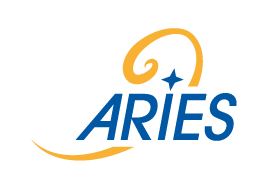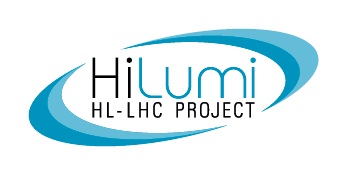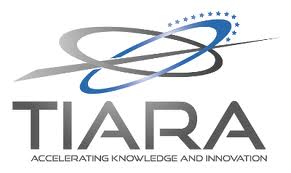What is Accelerating News?
Accelerating News is a quarterly online publication for the accelerator community.
ISSN: 2296-6536
The publication showcases news and results from the biggest accelerator research and development projects such as EuCARD-2, High Luminosity LHC, TIARA, FCC, EUPRAXIA, CERN-EC support to SESAME as well as interesting stories on other accelerator applications. The newsletter also collects upcoming accelerator research conferences and events.
Accelerating News is published 4 times a year, in mid March, mid June, mid September and mid December.
You can read Accelerating News via the homepage http://www.acceleratingnews.eu or by email. To subscribe to the email, click on the Subscribe link on the menu bar above.
History
Accelerating News evolved from the EuCARD quarterly project newsletter (see past issues), which was first published in June 2009 to a subscription list of approximately 200. Initiated by EuCARD and in collaboration with additional FP7 co-funded projects, the first edition of Accelerating News was published in April 2012 to an initial distribution list of about 800 subscribers. Currently more than 1750 members receive the quarterly issues.

Current Sponsors
Accelerating News is supported by the following projects, co-funded by the European Commission within the Framework Programme 7 Capacities Specific Programme.
|
 ARIES: Accelerator Research and Innovation for European Science and Society ARIES: Accelerator Research and Innovation for European Science and Society
ARIES coordinates a consortium of 41 partners from 18 different European countries to ensure the strengthen particle accelerator science for the future. By promoting innovation, fostering interdisciplinary and international collaboration, laying the groundwork for the training future accelerator scientists, and enhancing current accelerator facilities whilst producing concepts and technologies for future facilities, ARIES aims to enhance European R&D for particle accelerators and further grow and integrate the accelerator community.
|
 |
 EuCARD-2: Enhanced European Coordination for Accelerator Research & Development EuCARD-2: Enhanced European Coordination for Accelerator Research & Development
EuCARD-2 brings a global view to particle accelerator research, coordinating a consortium of 40 accelerator laboratories, technology institutes, universities and industry to jointly address common challenges for future generation of accelerators. By promoting complementary expertise, cross-disciplinary fertilisation and a wider sharing of knowledge and technologies throughout academia and with industry, EuCARD-2 aims at significantly enhancing multidisciplinary R&D for European accelerators, actively contributing to the development of a European Research Area in accelerator science. |
 |
|
 HL LHC Project: High Luminosity Large Hadron Collider HL LHC Project: High Luminosity Large Hadron Collider
The HiLumi LHC Design Study ran as an FP7 funded project between 2011 and 2015. The project now has moved from the design study to the machine construction phase. HL-LHC will extend the LHC’s discovery potential, increasing luminosity by a factor of 10 beyond the original design value and allowing the scientific community to study new phenomena.
|
 |
|
 FCC : Future Circular Collider FCC : Future Circular Collider
The Future Circular Collider (FCC) design study explores options for accelerator projects in a global context, with emphasis on proton-proton and electron-positron high-energy frontier machines. These design studies are coupled to a vigorous accelerator R&D programme, including high-field magnets and high-gradient accelerating structures, in collaboration with national institutes, laboratories and universities worldwide.
|
 |
 CESSAMag: stands for “CERN-EC Support for SESAME Magnets”. It is a FP7 project which aims at supporting the construction of the SESAME (link is external) light source, the Middle East's first major international research center in the making. CESSAMag: stands for “CERN-EC Support for SESAME Magnets”. It is a FP7 project which aims at supporting the construction of the SESAME (link is external) light source, the Middle East's first major international research center in the making. |
 |
 University of Liverpool: The University of Liverpool has an enviable international reputation for innovative research. A rich variety of research is performed at Liverpool, including Particle Physics, Nuclear Physics, Condensed Matter Physics, Surface Science and Astrophysics. Moreover, the University has the lead role in the Cockcroft Institute, an international centre of excellence for accelerator science and technology. Embracing academia, government and industry, it is unique in providing the intellectual focus, educational infrastructure and the essential facilities in innovating tools for scientific discoveries and wealth generation. University of Liverpool: The University of Liverpool has an enviable international reputation for innovative research. A rich variety of research is performed at Liverpool, including Particle Physics, Nuclear Physics, Condensed Matter Physics, Surface Science and Astrophysics. Moreover, the University has the lead role in the Cockcroft Institute, an international centre of excellence for accelerator science and technology. Embracing academia, government and industry, it is unique in providing the intellectual focus, educational infrastructure and the essential facilities in innovating tools for scientific discoveries and wealth generation. |

|
 EUPRAXIA :Eupraxia is a proposed EU Design Study on a European Plasma Research Accelerator with excellence in applications. The major objective of the Eupraxia design study is the preparation of a conceptual design report for the worldwide first plasma-based accelerator at 5 GeV with industrial beam quality and two user areas EUPRAXIA :Eupraxia is a proposed EU Design Study on a European Plasma Research Accelerator with excellence in applications. The major objective of the Eupraxia design study is the preparation of a conceptual design report for the worldwide first plasma-based accelerator at 5 GeV with industrial beam quality and two user areas |
 |
Previous Sponsors
|
 TIARA: Test Infrastructure and Accelerator Research Area TIARA: Test Infrastructure and Accelerator Research Area
The main objective of TIARA is the integration of national and international accelerator R&D infrastructures into a single distributed European accelerator R&D facility. This will include the implementation of organisational structures to combine existing individual infrastructures, ensuring their efficient operation and upgrades, and the construction of new infrastructures as part of TIARA.
|
 |
|
 EuCARD: European Coordination for Accelerator Research and Development EuCARD: European Coordination for Accelerator Research and Development
EuCARD is a common venture of 37 European Accelerator Laboratories, Institutes, Universities and Industrial Partners, initiated by ESGARD, to upgrade the large European research accelerators by R&D on innovative concepts and techniques: high field superconducting magnets, superconducting RF cavities that are particularly relevant for FLASH, XFEL and SC proton linacs, two-beam acceleration, high efficiency collimation and new accelerator concepts.
|
 |
 EUROnu: High Intensity Neutrino Oscillation Facility in Europe
The EUROnu design study is prompted by the recent discovery that the neutrino changes type (or flavour) as it travels through space, a phenomenon referred to as neutrino oscillations. To investigate these oscillations will require new high intensity neutrino oscillation facilities. The design study will review the three currently accepted methods to realize such a neutrino facility (the so-called neutrino Superbeams, Beta Beams and Neutrino Factories) and do cost and risk assessments as well as a critical physics evaluation of these facilities.
|
 |
|
|
|
Copyright and reprints
If you wish to reprint news items from Accelerating News, please acknowledge Accelerating News and the author of the news piece, ideally including a web link to http://www.acceleratingnews.eu. This work is licensed under the Creative Commons Attribution-Noncommercial 3.0 License.
Disclaimer
While Accelerating News aims to provide complete and up-to-date information, it does not warrant that the information is error-free and disclaims all liability with respect to results from the use of the information. |
|










